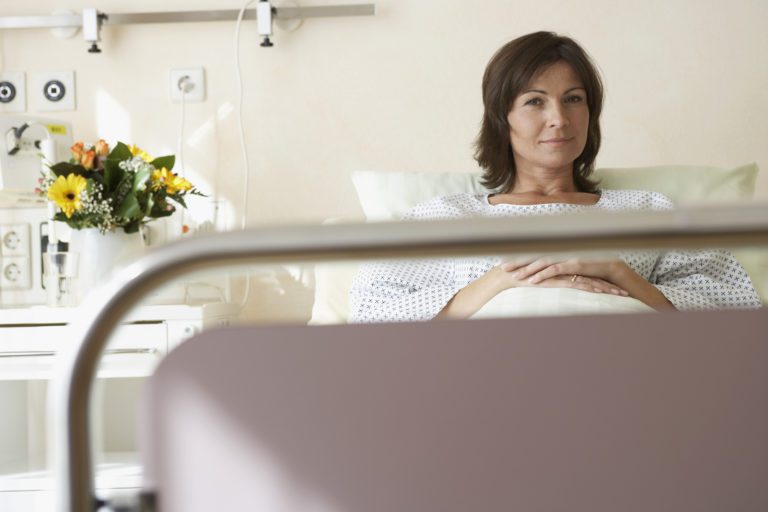Following birth, nearly every mom longs to go home with their beautiful bundle of joy. Relieved, so many moms express, “I’m so glad to be out of the hospital.”
Most postpartum moms won’t need to return to the hospital for additional care once they’ve taken their newborn home. But for some women, complications from two leading concerns—high blood pressure complications and infection related to cesarean surgery—may force them to return to the hospital for additional care.
High Blood Pressure Concerns
New moms who start to experience complications from childbirth typically come to the emergency room on average 5-7 days after being discharged home, but it may be sooner if they’re having complications from high blood pressure, measured as 140/90 millimeters of mercury (mm Hg) or greater, which is a condition called postpartum preeclampsia.
Postpartum preeclampsia is a rare condition that occurs when you have high blood pressure and excess protein in your urine soon after childbirth. Symptoms of postpartum preeclampsia include headache, particularly one that does not go away after taking pain medications, changes in your vision such as seeing spots or having blurred vision, and pain in the center of your chest.
When to Go to the Emergency Room
Some patients can be treated in the ER and sent home, while others, depending on the severity of the postpartum preeclampsia. Depending on your blood pressure reading and the amount of protein in your urine, you may need to be readmitted to the hospital and monitored closely. If you are readmitted, ask that your baby and your partner or support person stay with you as well so not to interrupt bonding and breastfeeding.
High blood pressure affects 10% of pregnancies. If you notice any of these symptoms while at home, it’s important that you call your doctor’s office or triage after-hours line immediately. Prompt attention and care is paramount to prevent the situation from worsening.
If you were told you have gestational high blood pressure (hypertension), chronic hypertension, or preeclampsia during pregnancy or labor, you will need to check your
blood pressure daily once you’re discharged home. Research shows that increases in blood pressures happen roughly 48 to 72 hours after birth. If you are on a new blood pressure medication or newly diagnosed with a hypertensive disorder related to pregnancy, you’ll need to follow up with your pregnancy care provider within three to four days of birthing.
As you monitor your blood pressure at home, remember that if you see a blood pressure reading of 140/90 or more immediately call your pregnancy care provider or regular healthcare provider. If you’re on blood pressure medication, you may need to increase your dosage.
Complications with Cesarean Surgery
Infection also brings new moms back to the hospital, especially after cesarean surgery. When your obstetrician closes your cesarean incision, they may use either absorbable stitches or staples to close your incision. No matter the closure, a normal healing C-section incision should be fully closed, with no open gaps, and appear slightly pink in color.
It is ok for your incision to have a little bit of drainage, and it should be clear in color. Signs of an infected incision include:
- foul smelling, pus-like discharge in a yellowish color
- an incision that is red around the edges
- an incision that isn’t fully closed or looks like it is not healing
- warm to the touch
- fever of 100.4 degrees or more
You will need to be seen by your pregnancy care provider if you have any of the above signs. Prompt attention to these signs of developing complications can keep a minor situation from turning into a worsening one. As they often say in healthcare, “when it doubt, get it checked out.”
Cesarean Incision Care
If you have a healing cesarean incision, follow the directions for care from your pregnancy provider. If none were provided, here’s how to care for your cesarean incision as it heals:
- Your incision needs to be kept dry and clean
- Wash the incision daily with warm, soapy water; pat the incision and the area around it dry after cleansing
- If there is surgical tape or strips on your incision, allow them to fall off on their own. This can take about a week as your incision heals
YOU MAY ALSO LIKE: Pregnancy Loss: Taking Care of Yourself after a Loss






Comments are closed.